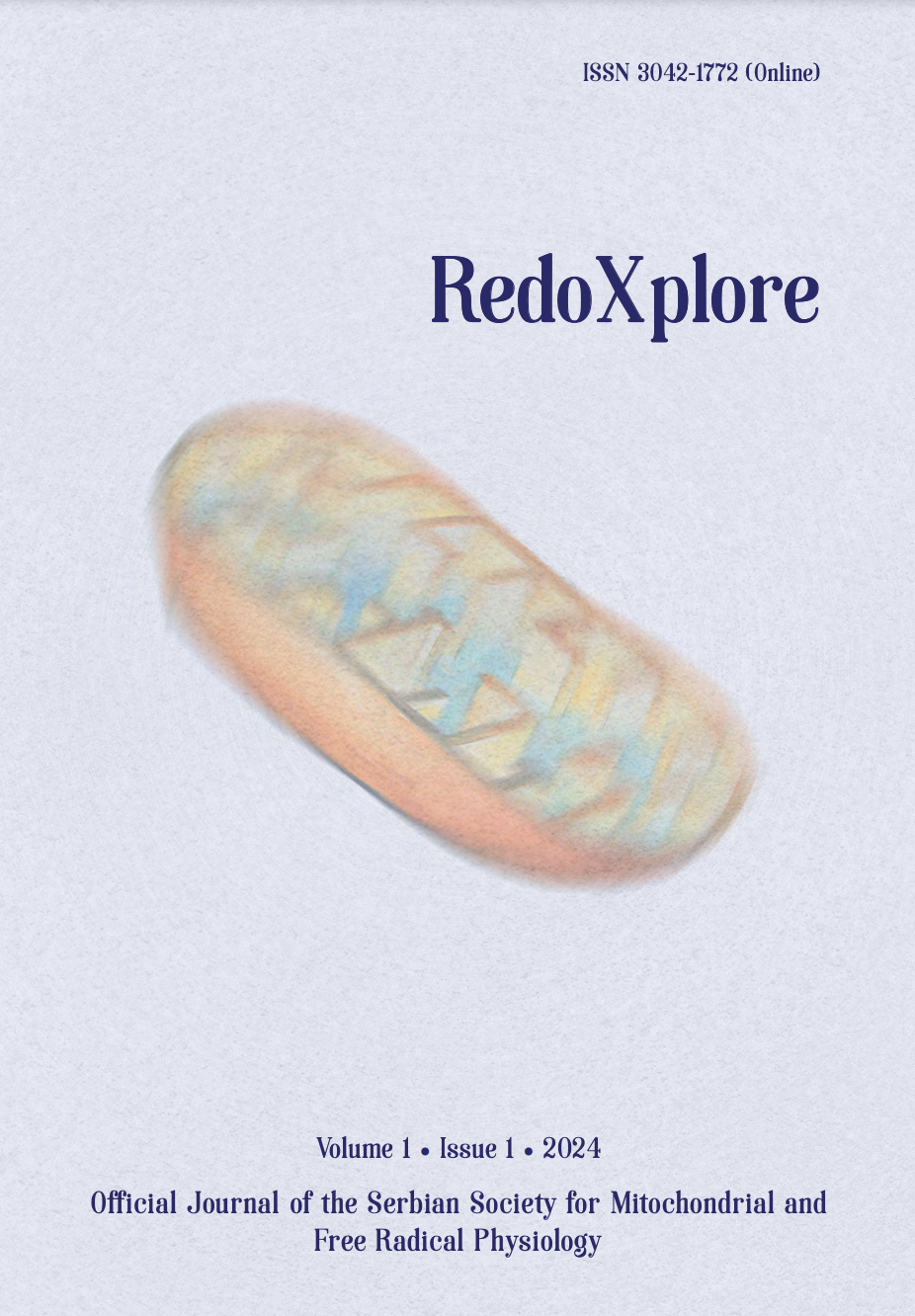
More articles from Volume 1, Issue 1, 2024
REDOX AND METABOLIC REPROGRAMMING OF BREAST CANCER CELLS AND ASSOCIATED ADIPOSE TISSUE - THE CORNERSTONES OF ADAPTIVE TUMOUR BEHAVIOUR
INSULIN MODULATES MITOCHONDRIAL STRUCTURAL AND FUNCTIONAL MOSAICISM IN BROWN ADIPOCYTES
NITRITE MITIGATES OXIDATIVE BURST IN ISCHEMIA/REPERFUSION IN BRAIN SLICES
NITRIC OXIDE, SUPEROXIDE AND PEROXYNITRITE – REDOX REGULATION OF THE CARDIOVASCULAR SYSTEM BY NITRO-OXIDATIVE STRESS AND S-NITROS(YL)ATION
DIETARY NITRATE AS PIVOT ON THE GUT MICROBIOTA-HOST REDOX COMMUNICATION
FATTY ACID PROFILES DIFFER BETWEEN HEALTHY AND MULTIPLE SCLEROSIS-DIAGNOSED ADULTS
Centre of Excellence in Nutrition and Metabolism Research, Institute for Medical Research, National Institute of Republic of Serbia, University of Belgrade , Belgrade , Serbia
Centre of Excellence in Nutrition and Metabolism Research, Institute for Medical Research, National Institute of Republic of Serbia, University of Belgrade , Belgrade , Serbia
Vinča Institute of Nuclear Sciences , Vinča , Serbia
Vinča Institute of Nuclear Sciences , Vinča , Serbia
Clinic for Neurology, Medical Faculty of the Military Medical Academy, University of Defence , Belgrade , Serbia
Vinča Institute of Nuclear Sciences , Vinča , Serbia
Vinča Institute of Nuclear Sciences , Vinča , Serbia
Editor: Bato Korac
Published: 29.08.2024.
Short oral presentations
Volume 1, Issue 1 (2024)
Abstract
Multiple sclerosis (MS) is a chronic, immune-mediated inflammatory disease of the central nervous system (CNS). Relapsing-remitting multiple sclerosis (RRMS) is the most common clinical subtype of MS. MS is characterized by demyelination and myelin is mainly composed of lipids. Lipids play many roles in the CNS including signaling, structural support, mediating inflammation, and membrane biogenesis. Omega-3 polyunsaturated fatty acids (PUFA) are central to maintaining health and they are present in a wide array of tissues with broad functions including the active component of phospholipid cell membranes and substrate for molecular signaling pathways. This study aimed to evaluate fatty acids (FA) profiles of patients with RRMS (n=30) compared to healthy people (n=20). Analysis of total lipids was performed from erythrocyte samples. The total lipid extracts from erythrocytes were prepared by adding chloroform/methanol (2:1, v/v) mixture containing butylated hydroxytoluene (0.05% BHT weight/volume). FA methyl esters were prepared by transmethylation with 3N HCl in methanol. FA profiles were determined by gas chromatography (GC). The content of individual FA was expressed as a percentage of the total FA. Results of this study revealed that total saturated fatty acids (SFA) are significantly higher in MS patients compared to controls. While total PUFAs, total n-3 PUFAs, and omega-3 index are statistically lower in MS patients. The n-6/n-3 ratio is significantly higher in MS patients compared to controls. Also, the AA/EPA ratio is significantly lower in the control group compared to MS patients. Conversely, the EPA/AA index is significantly reduced in MS patients. Omega-3 lipids, which have a protective role by preserving the blood-brain barrier, are significantly reduced in the erythrocytes of patients with MS. Increased n-3 PUFA and decreased SFA intake could counteract inflammation, energy storage and utilization imbalance and, overall state in patients with MS.
Citation
Copyright

This work is licensed under a Creative Commons Attribution-NonCommercial-ShareAlike 4.0 International License.
Article metrics
The statements, opinions and data contained in the journal are solely those of the individual authors and contributors and not of the publisher and the editor(s). We stay neutral with regard to jurisdictional claims in published maps and institutional affiliations.






